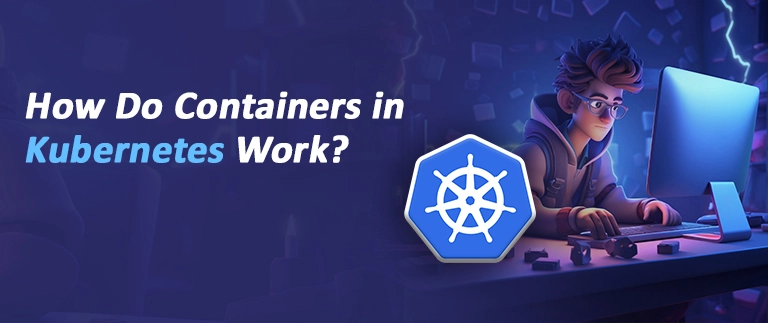Welcome to the fascinating world of Kubernetes and containerization! If you’re curious about how containers work in Kubernetes and why it’s a game-changer in the world of software development, you’ve come to the right place.
In this blog post, we’ll dive into the inner workings of Kubernetes containers, unraveling their magic as they revolutionize application deployment and management. So, fasten your seatbelts and get ready for an enlightening journey through the realm of container orchestration with Kubernetes!
Whether you’re a seasoned developer or just starting your tech adventure, this article will shed light on everything you need to know about containers in Kubernetes alongside tips for Kubernetes online training. Let’s embark on our exploration now!
What Is a Kubernetes Container?
In the world of software development, containers have emerged as a revolutionary technology. And at the heart of containerization lies Kubernetes, an open-source platform that orchestrates and manages these containers with utmost efficiency.
So, what exactly is a Kubernetes container? In simple terms, it’s a lightweight and isolated runtime environment that encapsulates all the dependencies required to run a specific application or service. Think of it as a virtual package that includes everything needed for smooth execution – from code to libraries and even system tools.
Containers provide several advantages over traditional deployment methods. They promote consistency by ensuring that applications work consistently across various environments. Containers also enable developers to package their applications in a portable manner, allowing seamless movement between different infrastructures.
But what makes Kubernetes containers truly remarkable is their ability to scale effortlessly. With Kubernetes’ built-in scaling features, you can easily create multiple instances of your containerized application based on demand, resulting in optimal resource utilization and improved responsiveness.
By leveraging these capabilities, organizations can achieve faster deployment times, enhanced scalability, improved resource management, and simplified maintenance processes – ultimately leading to more efficient software delivery cycles.
Now that we’ve covered the basics, let’s dive deeper into how containers actually work within the context of Kubernetes!
How Does a Container Work in Kubernetes?
Containers are at the heart of Kubernetes, serving as the fundamental building blocks for deploying and running applications. But how exactly do containers work in this powerful orchestration platform?
In Kubernetes, a container is a self-contained unit that encapsulates an application along with all its dependencies – libraries, binaries, and configuration files. This isolation ensures that each container operates independently from others on the same host.
Kubernetes leverages containerization technology to efficiently manage these containers across a cluster of nodes. Each node can run multiple containers, enabling high scalability and resource optimization. The Kubernetes scheduler assigns containers to nodes based on resource availability and workload requirements.
Once deployed, each container runs within its own sandboxed environment called a pod. A pod may consist of one or more tightly coupled containers that share resources like network namespaces and storage volumes.
To ensure seamless communication between pods or even across different clusters, Kubernetes provides networking capabilities through services. Services act as virtual IP addresses that route traffic to specific pods based on labels assigned to them.
The beauty of using containers in Kubernetes lies in their portability and ease of management. Containers enable developers to package applications once and deploy them anywhere without worrying about underlying infrastructure dependencies or compatibility issues.
Remember that continuous learning is essential when working with cutting-edge technologies like Kubernetes. Stay updated with new releases and best practices by joining relevant communities, and attending conferences or webinars related to cloud-native technologies such as Docker or Istio.Kubernetes professionals take Jenkins training, Terraform training, DevOps training, Docker training, and other professional certifications to fully grasp the different steps of a typical DevOps structure.
What Is Container Orchestration?
Container orchestration is a crucial aspect of managing and scaling applications in a Kubernetes environment. It refers to the process of automating the deployment, scaling, and management of containers within a cluster.
Container orchestration also allows for better resource utilization by optimizing the distribution of containers across nodes in a cluster. This not only improves efficiency but also enhances fault tolerance as it enables automatic recovery from node failures.
One popular container orchestration tool is Kubernetes itself, which provides robust features for managing containers at scale. With container orchestration, you can define desired states for your application, such as the number of replicas or resource requirements.
Understanding how containerization works in Kubernetes is crucial for anyone looking to leverage its power in deploying and managing applications efficiently. With its robust features and wide community support, Kubernetes has become the industry standard for container orchestration.
Kubernetes takes care of scheduling these containers across multiple nodes in the cluster while ensuring high availability and fault tolerance. It monitors the health of each container and automatically restarts failed ones or replaces them with new instances.
Moreover, container orchestration enables dynamic scaling based on workload demands. You can scale up or down your application by adding or removing containers seamlessly without any disruption to users.
In addition to scalability and resilience benefits, container orchestration also simplifies service discovery and load balancing. Kubernetes offers built-in DNS-based service discovery that allows applications to locate other services dynamically.
Container orchestration with tools like Kubernetes streamlines application management by automating various tasks involved in deploying and maintaining containers efficiently. It enhances reliability, scalability, and flexibility while reducing operational complexity – making it an essential component for modern cloud-native architectures.
Conclusion
In this article, we have explored the concept of Kubernetes containers and how they work within the Kubernetes ecosystem. Containers provide a lightweight and efficient way to package applications and their dependencies, allowing for easy deployment across different environments.
We discussed how Kubernetes provides container orchestration, enabling seamless management of containers at scale. By leveraging features like pod scheduling, scaling, and service discovery, Kubernetes ensures that applications are highly available and can be easily scaled up or down based on demand.
If you’re interested in learning more about Kubernetes or exploring containerization further, consider enrolling in online training courses. These courses provide comprehensive guidance on using Kubernetes effectively to harness the full potential of containers in your application deployments.Mindbox Trainings is a house of professional trainers with expertise in the DevOps sector. If you need Kubernetes online training that helps you embark on your professional journey in the IT industry, we are here to help you.
| “Want to take your IT career to the next level? Explore our Advanced Cloud Native DevOps Master Program to enhance your DevOps career now!” |
Amol Shete
Senior Software Engineer
A well-experienced DevOps engineer who loves to discuss cloud, DevOps, and Kubernetes. An energetic team player with great communication & interpersonal skills.





